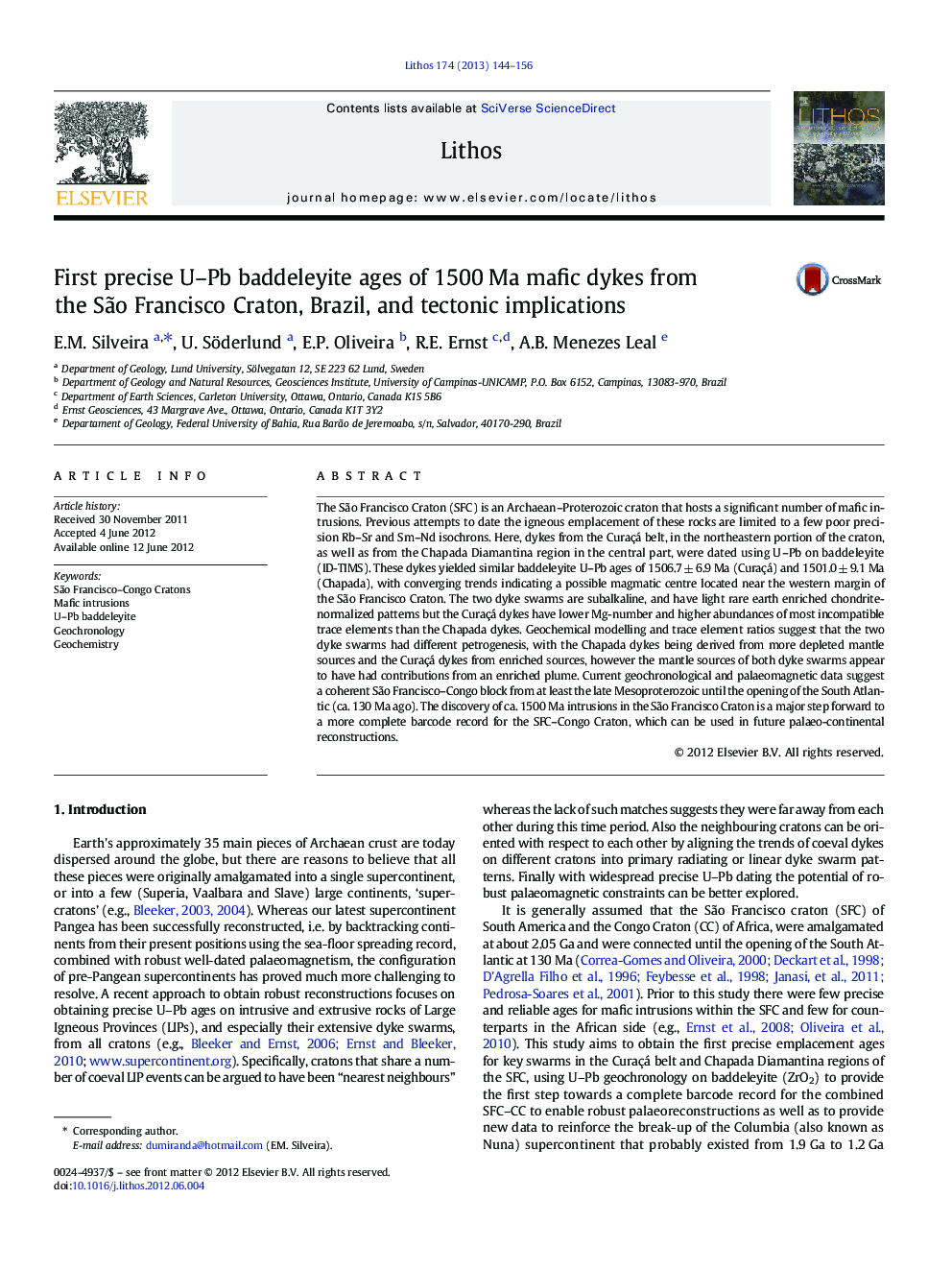| Article ID | Journal | Published Year | Pages | File Type |
|---|---|---|---|---|
| 4716185 | Lithos | 2013 | 13 Pages |
The São Francisco Craton (SFC) is an Archaean–Proterozoic craton that hosts a significant number of mafic intrusions. Previous attempts to date the igneous emplacement of these rocks are limited to a few poor precision Rb–Sr and Sm–Nd isochrons. Here, dykes from the Curaçá belt, in the northeastern portion of the craton, as well as from the Chapada Diamantina region in the central part, were dated using U–Pb on baddeleyite (ID-TIMS). These dykes yielded similar baddeleyite U–Pb ages of 1506.7 ± 6.9 Ma (Curaçá) and 1501.0 ± 9.1 Ma (Chapada), with converging trends indicating a possible magmatic centre located near the western margin of the São Francisco Craton. The two dyke swarms are subalkaline, and have light rare earth enriched chondrite-normalized patterns but the Curaçá dykes have lower Mg-number and higher abundances of most incompatible trace elements than the Chapada dykes. Geochemical modelling and trace element ratios suggest that the two dyke swarms had different petrogenesis, with the Chapada dykes being derived from more depleted mantle sources and the Curaçá dykes from enriched sources, however the mantle sources of both dyke swarms appear to have had contributions from an enriched plume. Current geochronological and palaeomagnetic data suggest a coherent São Francisco–Congo block from at least the late Mesoproterozoic until the opening of the South Atlantic (ca. 130 Ma ago). The discovery of ca. 1500 Ma intrusions in the São Francisco Craton is a major step forward to a more complete barcode record for the SFC–Congo Craton, which can be used in future palaeo-continental reconstructions.
► We dated two mafic dykes from the São Francisco Craton in Brazil. ► High-precision dating U–Pb on baddeleyite yielded around 1500 Ma for both dykes. ► Geochemistry suggests that the two dyke swarms had different petrogenesis. ► These ages are a major step towards a complete São Francisco–Congo Craton barcode.
